Strawberries
Agdia Immunostrips for Diagnosing Phytophthora in the Field
The following article is a discussion of Agdia Immunostrips (photo 1 below) for making diagnoses of Phytophthora from plants.
The idea with the strips is sort of what most of us have already experienced with the Covid test kits - basically you get a sample, process it in some way (swirling a Q-tip around in your nostril for Covid or crushing up suspect root tissue with the Agdia test - see photo 2 below) and then you get a result of one or two lines (one the control on top, and a second stripe appearing when you have the disease and no stripe appearing if you don't). An example of a positive read which was subsequently verified as positive with a highly reputable plant disease diagnostic lab is shown on the third photo below.
Do they work consistently would be the next question, and our own little bit of experience now, together with the experience of other researchers in our industry, says that yes they do.
Last year, the berry industry experienced more than significant amounts of flooding, which presented us with a tremendous opportunity to test these strips for the water loving Phytophthora. Two tests were done side by side with samples submitted to Trical Diagnostics, a local lab recognized for accurate diagnosis of plant diseases. In this very small sample, one trial out of strawberry tested positive with the Agdia strips also came out positive at Trical Diagnostics for Phytophthora, and another sample which Mark swore up and down would test positive for Phytophthora (very early in the season, cool weather and excessive moisture at the bottom of the hill), did not test positive with the strips and this was substantiated by a diagnosis not of Phytophthora but of Fusarium oxysporum f.sp. fragariae.
This year, Mark was called out to field suffering a great deal of wilt in raspberries, prompting yet again a test with the Agdia strips, and ALL FIVE samples tested positive for Phytophthora (see photo 5 below), a result which was confirmed by in-house testing by that company's research support of plants from the same field.
The thought is then at this point to share that these testing strips can be useful to the grower in diagnosing Phytophthora and Phytophthora like species. Since these strips DO NOT diagnose down to the level of species, which while for most field management decisions is ok, those desiring an understanding of a problem down to that level still must do at a reputable plant diagnostic laboratory.
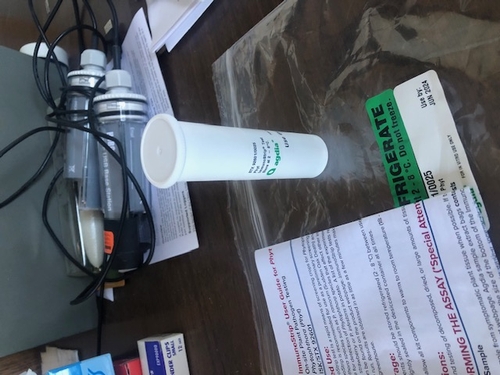
Photo 1. A package of Agdia test strips, there are 25 strips per tube and together with the bags of buffer cost is a bit over $100.
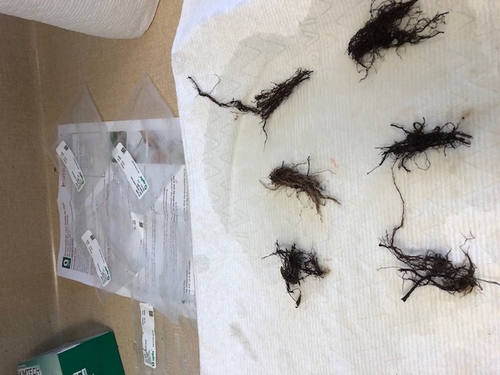
Photo 2. Suspect root samples laid out ready for insertion into the bags of buffer solution in the hinterground and subsequent maceration.
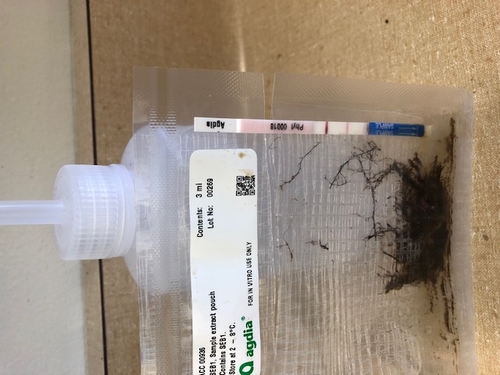
Photo 3. A positive read of a sample, notice the lighter line 2/3's of the way down the strip, this is an indication of positive.
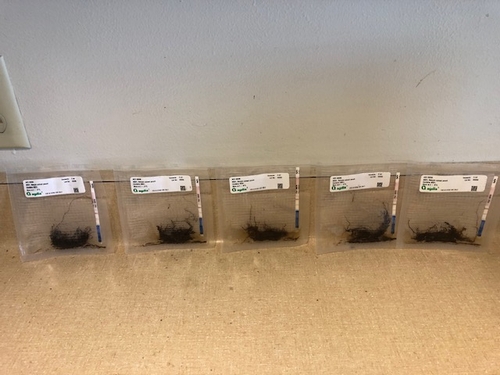
Photo 4. Five in a row, all positive - later confirmed by grower support research lab as Phytophthora.
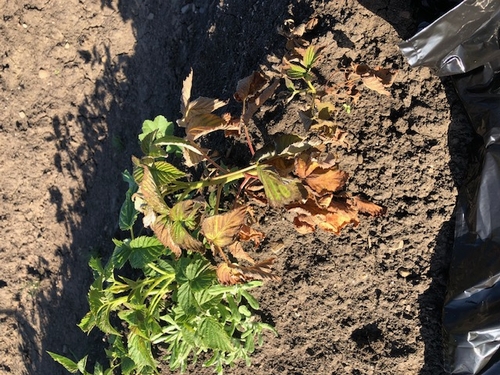
Photo 5: One of the Phytophthora affected raspberry plants in the field.
Meeting Announcement-California Berry Cultivars May 7
California Berry Cultivars (CBC)will host a field day in Watsonville on Tuesday, May 7th starting at 10:30AM. Content will be solid; along with a presentation and field walk around by CBC staff and a talk on soil disease by Samantha Simard from CalPoly I'll be giving a talk on some findings on cold conditioning in strawberry. A BBQ lunch will be provided afterwards.
Agenda is attached below; key meeting data is here:
When: May 7th, at 10:30AM
Where: 181 Dairy Rd, Watsonville, CA
Look forward seeing you all there!
CBC May 7 2024 Agenda
Special Seminar: Recent Research Developments on Spotted Wing Drosophila (SWD) Insecticide Resistance in the Monterey Bay Area
Nationally recognized and long time California strawberry entomologist Frank Zalom will join Christine Tabuloc and myself this coming Friday April 19 at my office in Watsonville to discuss recent developments in insecticide resistance in our populations of spotted wing drosophila (SWD). It's no secret to anybody that these flies have been tougher to control as our insecticides lose efficacy because of resistance; this seminar will give some insight as to how and why this is happening with some thoughts at the end by these entomology leaders on what steps to take next.
Meeting set to start at 9:30 am and continue until noon. It's a fairly specialized topic, but all are welcome to attend.
More details can be found in the pdf agenda attached below.
Zalom SWD Resistance Seminar - April 19
Watsonville Strawberries Ready to Rip
Just on a walk this morning (or was it afternoon, time change) on the levee outside of Watsonville and spied the gorgeous site below. Lots of red, and more importantly plenty of flowers, which with no rain in the forecast for the next couple of weeks might just make it to market.
Looking good!
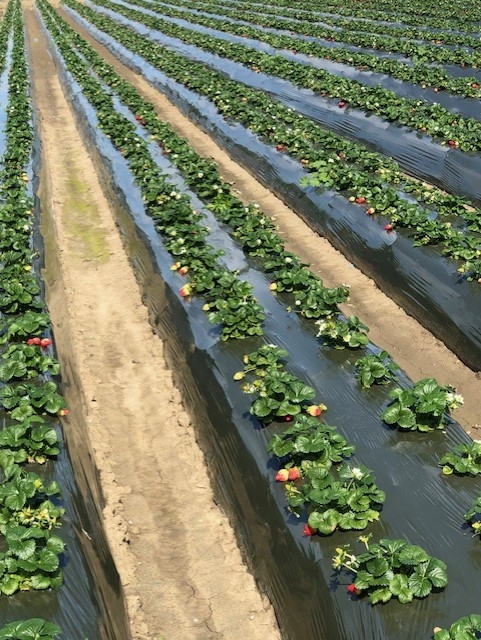
Things looking up in Watsonville
Anthracnose is Around Right Now – Caution Advised
We had picture brought in by a grower on Friday of some fruit from his field showing clear signs of anthracnose. That is to say, dark, lens shaped lesions on the fruit. It's understood that these are very early fruit and they have been exposed to some pretty tough conditions but nevertheless knowing that this disease is around gives reason for concern for local PCA's and growers.
While temperatures in the upcoming week are leaning on the cool side of the 20-25o C (68-77o F) optimum for the disease, the abundance of precipitation predicted and the resulting splashing onto flowers, fruit and leaves is going to be good for disease growth and spread.
Briefly, anthracnose in strawberry is most often caused by the pathogen Colletotrichum acutatum, and can have a number of sources, including the soil, the surrounding environment or the plants themselves. What we saw are the lesions on the fruit, and these lesions start as small sunken oval to round brown to black spots (some people describe them as “cigarette burns”) that can expand to the entire fruit.
What to do about an anthracnose fruit infestation in strawberry is fairly straightforward. For conventional growers there are several fungicides (see the UC IPM link below for specifics) registered for topical application, and if one is unable or not willing to spray, physical removal of the infested fruit will help to reduce the disease load.
A lot has been written about anthracnose in strawberry already:
https://ipm.ucanr.edu/agriculture/strawberry/anthracnose/
And we at the UC have put out a wonderful grower guideline about it as well:
https://ucanr.edu/blogs/strawberries_caneberries/blogfiles/47929.pdf
And that same guide is also available in Spanish:
https://ucanr.edu/blogs/strawberries_caneberries/blogfiles/47930.pdf
Also, the grower who came spoke Spanish and was wondering if we don't have the UC IPM guidelines in Spanish? Why, of course we do, the link is posted here:
https://ipm.ucanr.edu/legacy_assets/pdf/pmg/pmgstrawberry_espanol.pdf
Even more, Gerald Holmes from the CalPoly Strawberry Center wrote in to remind us of the excellent efficacy and timing guide that can be referenced for anthracnose in strawberry:
https://ipm.ucanr.edu/legacy_assets/pdf/pmg/fungicideefficacytiming.pdf
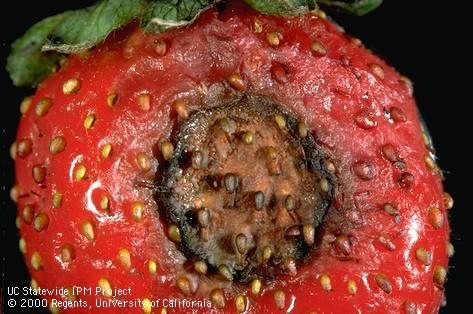
Classic symptom of anthracnose on strawberry fruit, brown to black sunken spot. Photo courtesy UC IPM.

